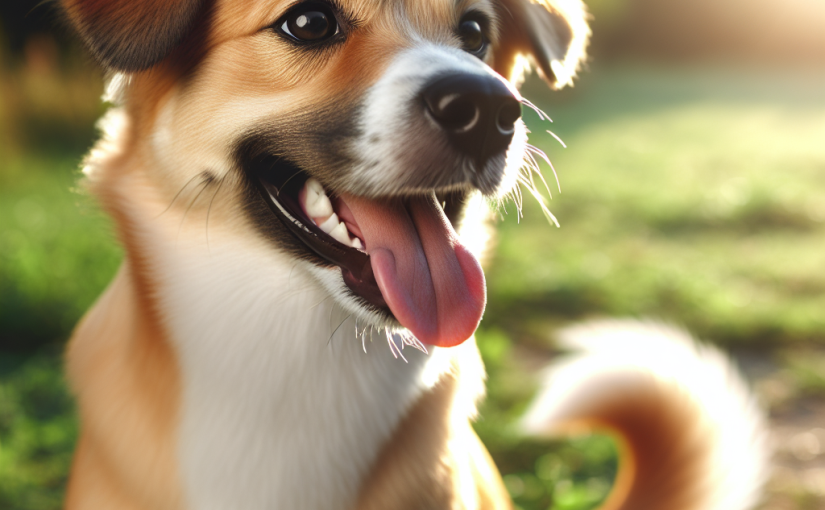Introduction to the Flea Dilemma

You might think you’re just petting your dog, but suddenly, there it is—a tiny, annoying flea. It’s like discovering an uninvited guest at your party, one with lots of tiny, hopping friends. Flea infestation on dogs is not just a nuisance; it’s a full-blown headache. These little critters are relentless, and once they move in, they don’t want to leave. Fleas are not picky. They’ll hitch a ride on your dog and end up making themselves at home—literally. That’s right, they can invade your couch, carpet, and even your favorite chair.
So, what’s the best way to get rid of fleas on my dog? That’s the million-dollar question, isn’t it? With over two decades in the pet industry, I’ve seen some things. Let me tell you, dealing with fleas is like trying to get a cat to take a bath—it’s a challenge. But fear not, my fellow dog lovers, there are ways to kick those fleas to the curb.
Understanding the Flea Life Cycle
To outsmart a flea, you need to think like a flea—sort of like a weird flea-backwards Sherlock Holmes. Understanding the flea life cycle is key. These little guys have a whole routine going on. They start as eggs, hatch into larvae, then become pupae, and finally, adult fleas. Like a terrible surprise, they can lay dormant for months just waiting for the right moment—like a villain in a bad movie.
Knowing this cycle helps you attack them at every stage. You don’t just want to deal with the adults hopping around your dog. You want to stop the whole operation. Flea life cycle understanding gives you the upper hand. It’s like having a secret map to the enemy’s lair. You’ll be ready for them.
The Role of Prescription Flea Medications
Alright, so maybe you’re thinking about the big guns—prescription flea medication for dogs. These are like the superheroes of flea control. Fast-acting flea solutions for dogs, these. They swoop in and save the day, stopping fleas dead in their tracks. They’re like the Avengers of the pet world—minus the capes.
Veterinarians often recommend these, and for good reason. They work. These meds can be pills, topical treatments, or even injections. You’ve got options. Plus, they’re designed to be safe for your furry friend while being lethal to fleas. It’s like having a bouncer who only kicks out the troublemakers and lets your dog enjoy the party in peace.
Home Remedies for Flea Control
Now, maybe you’re a DIY kind of person. You like to get your hands dirty and try natural flea remedies for dogs. There’s something satisfying about using stuff from your pantry to tackle a problem. Some folks swear by things like apple cider vinegar, lemon sprays, or even diatomaceous earth. It’s like using a homemade potion to fight off dragons.
These remedies can be effective, especially if you’re dealing with a minor infestation. They’re gentle on your pet and the environment—no harsh chemicals, just good ol’ fashion know-how. It’s like channeling your inner witch or wizard, concocting brews to ward off evil. Just remember, though, natural doesn’t always mean instant results. You might need a little patience and persistence.
Importance of Treating Your Home Environment
Finally, let’s talk about the home front—a battleground in its own right. Treating home for fleas is crucial. I mean, what’s the point of cleaning your dog if the fleas are having a party in your living room? You need those home flea control tips like yesterday.
Vacuuming is your best friend. Fleas love to hide in carpets and upholstery. They’re like those houseguests who refuse to leave. Wash your dog’s bedding, treat the yard, and maybe even consider a professional pest control service if things get out of hand. It’s like spring cleaning—but with a mission.
So, what’s the best way to get rid of fleas on my dog? It’s a mix—a cocktail of understanding, medication, natural remedies, and home care. You’re not just fighting fleas; you’re taking back your home. It’s a journey, one that requires vigilance and maybe a few extra loads of laundry. But you’re not alone in this. Fleas might be small, but with the right approach, you can make them history.
Thanks for sticking through this flea-fueled adventure with me. Remember, you’ve got this. Your dog is counting on you to be their hero. Best of luck in your flea-fighting endeavors.
How to Use Flea Shampoos Effectively
Alright, let’s get real about flea shampoos. It’s not just about squirting some sudsy stuff on your pooch and expecting miracles. Nope. Timing’s the secret sauce here. You gotta let that flea shampoo for dogs sit a bit—like you’re marinating a steak. Not too long, not too short. Otherwise, you’re just giving your dog a bath with no extra benefits.
I remember this one time, I was in a rush—like five-minutes-to-get-out-the-door rush—and thought I’d squeeze in a quick bath for Buster, my old golden retriever. Well, I skimped on the sit time. Guess what? Fleas were having a fiesta on Buster’s back the next day. Lesson learned.
The trick is to soak your furry friend thoroughly, work the shampoo into their coat, and let it linger for a good ten minutes. Read the label, but don’t be a slave to it. Use your judgment. It might feel like an eternity, but trust me, it’s worth it. Rinse well, and maybe have a treat ready for your pup—bribery works wonders.
Understanding Flea Collars and Their Role
Now, flea collars. You ever see a dog strutting around with one and think, “Is that just a fashion statement?” Spoiler alert: they’re more than just accessorizing. The best flea collars are like those superhero capes—quietly doing their job without much fanfare.
But, fair warning: not all collars are equal. Some are as effective as a paperweight in a windstorm. Do a little digging, read reviews, ask around. You know, the usual. I once got a cheap collar for my neighbor’s dog, thinking I was being a hero. Turns out, I was more like a zero—the fleas didn’t budge.
The good ones release active ingredients that spread over your dog’s skin. It’s like a protective shield. Stick to a schedule, replace them as needed, and don’t expect miracles overnight. You’re building a defense system here, not launching a rocket.
The Power of Oral Flea Medications
Oral flea meds for dogs—sounds all high-tech, doesn’t it? Like something out of a sci-fi movie. But they’re actually pretty straightforward. Pop a pill, and let the magic happen.
These meds work from the inside out, turning your dog into a flea-fighting machine. I had a buddy, Dave, who was skeptical at first. Thought it was too easy. But after watching his dog go from flea-ridden to flea-free in a week, he became a believer.
Now, a quick word of caution: always check with your vet. You want to be sure you’re giving the right dose, and that it’s safe for your specific dog. Meds can be a game-changer, but you gotta play it smart.
Natural Remedies: Do They Really Work?
Ah, natural flea remedies for dogs. You either love ’em or hate ’em. Some folks swear by essential oils, diatomaceous earth, or even a good old vinegar rinse. Me? I’m a fan of trying things out. What’s the harm, right?
I’ve had mixed results. One summer, I went all-in on the natural route. Mixed up some concoction that smelled like a salad dressing and spritzed it on my dog. Did it work? Kind of. Fleas didn’t disappear overnight, but we saw fewer of them.
Here’s the deal: if you’re going natural, manage your expectations. It’s like a slow burn. You might not see instant results, but it can be part of a bigger strategy. Keep it in your toolkit, but don’t rely on it alone.
Preventing Future Flea Infestations
Ah, prevention. The unsung hero of the flea battle. Once you’ve got things under control, you want to keep it that way. Ain’t nobody got time for a repeat performance.
Prevent flea infestation by staying proactive. Keep your dog’s bedding clean, vacuum like it’s going out of style, and keep the yard tidy. I’m talking regular patrols—like you’re the neighborhood watch for fleas.
Don’t forget those flea control tips. Rotate your methods. Mix up shampoos, collars, and oral meds. Keeps those fleas guessing. It’s like a game of chess—stay one step ahead.
Stick to a routine, and you’ll be golden. And remember: you’re not alone in this. Every dog owner faces the same battle. You’ve got this, and so does your dog. Here’s to a flea-free existence—cheers!
Common Mistakes Folks Make When Handling Fleas
Oh, fleas. The tiny little buggers that make our dogs scratch like there’s no tomorrow. We’ve all been there, right? Trying to rid your furry friend of these pests can feel like a Herculean task. And let’s face it, we’ve all made some common flea control mistakes. First off, a lot of folks skip the whole regular checks thing. You know, getting down on the floor with Fido and combing through his fur. It’s a pain, I get it. But ignoring it is like skipping the dentist for years—one day, it’s gonna bite you back.
Another mistake? Buying those cheap, over-the-counter flea products. Trust me, they often work as well as a chocolate teapot. People think they’re saving a buck, but end up spending more in the long run. Or, even worse, they end up at the vet’s because Sparky had a reaction.
And then there’s the “one-and-done” mentality. Oh, how naive we all were. Fleas don’t just vanish after one treatment. They’re like that annoying relative who never gets the hint to leave. You gotta keep at it, be relentless. Otherwise, you’ll be back at square one before you can say “infestation.”
Natural Home Remedies: Do They Work?
Now, I’ve heard all sorts of tales about natural flea remedies for dogs. Some folks swear by them. Others? Not so much. It’s like the great pineapple on pizza debate. But hey, you’re curious, so let’s dig in.
Vinegar is one remedy that gets tossed around a lot. Some folks mix it with water and spray it on their dogs. The theory? Fleas hate the smell. But in practice, it’s hit or miss. Your dog might end up smelling like a salad.
Then there’s the coconut oil craze. People rub it on their dog’s skin, believing it repels fleas. It might make your pup’s coat shiny, but as for flea control—jury’s still out.
Lemon juice, essential oils, garlic—I’ve heard it all. But remember, not everything that sounds good is safe. Essential oils, for instance, can be toxic to dogs. So, tread carefully. Maybe try a small patch test first.
Flea control home remedies can be a mixed bag. They might work for some, but they’re not a one-size-fits-all. Sometimes, you gotta test the waters and see what sticks.
The Role of Diet in Flea Prevention
Alright, let’s talk chow. Diet and flea prevention go hand in hand more than you’d think. Feed your dog right, and you’ll give fleas a run for their money. But here’s the kicker—it’s not just about any food.
Some claim that a raw food diet helps. The logic is that healthier skin and coat make it harder for fleas to latch on. But switching diets is no small feat. And raw food can be pricey, like trying to feed a family of five at a steakhouse every night.
Then, there’s the brewer’s yeast thing. Sprinkle it on your dog’s food, they say. Fleas supposedly hate the smell. Some folks swear by it, while others roll their eyes.
Omega-3 fatty acids are also in the spotlight. They’re good for the skin, making it less hospitable to fleas. But again, it’s not a magic bullet.
Diet can be a part of your flea prevention arsenal, but don’t put all your eggs in one basket. It’s more like a supporting actor than the lead role.
When to Call in the Pros: Vet Visits and Treatments
Sometimes, you just gotta admit defeat. When you’re knee-deep in flea hell, it’s time to call in the big guns. Vet visits can be a lifesaver, literally. But knowing when to see a vet for fleas can save you and your pup a world of pain.
If your dog is scratching so much they’re losing fur or have red, irritated skin, it’s time. Don’t wait till things look like a horror movie. Vets have access to professional flea treatments for dogs that actually work. They can prescribe meds that are stronger and more effective than the stuff on the store shelves.
But vets can be pricey. Like, “there goes my vacation fund” pricey. Still, it’s better than watching your dog suffer or dealing with a full-blown infestation in your home.
The pros know their stuff. Sometimes, it’s best to let them take the reins and give your dog some much-needed relief.
Keeping Fleas Away for Good: Long-Term Strategies
Alright, you’ve battled the fleas and lived to tell the tale. But how do you keep them away for good? Long-term flea prevention strategies are key. And boy, do they require some commitment.
First off, regular cleaning. Your home is like a flea paradise if you’re not careful. Vacuuming, washing pet bedding, and keeping things tidy can make a world of difference. It’s a drag, but hey, it’s cheaper than calling the exterminator.
Next up, regular treatments. Whether it’s a topical solution or a flea collar, consistency is your friend. Set reminders if you have to—whatever keeps those pesky fleas at bay.
And let’s not forget the great outdoors. Fleas love to hitch a ride from your yard. Keep the grass short, and consider using pet-safe yard treatments.
Long-term strategies are like a marathon, not a sprint. But with a little effort, you can keep those fleas at bay and enjoy some peace.
Thanks for sticking with me through this flea-filled adventure. You’re well on your way to becoming a flea-fighting champ. Keep up the good work, and here’s to a flea-free life for you and your furry friend!
Quick Takeaways:
Alright, let’s wrap this up with some quick takeaways. You’re battling a flea infestation on your dog, and you’re probably feeling like you’re in a never-ending loop of flea madness. But don’t worry, there’s a light at the end of the tunnel. The best way to get rid of fleas on your dog? A multi-pronged attack.
First, think flea shampoo for dogs. Sure, it sounds basic, but timing is key. Lather it up and let it sit for a bit. Too short and you’re just giving your dog a bath. Too long, and your dog may not be too happy with you. Then, there’s the flea collars. Not all of them are worth the hype, so do your homework. You want one that actually does the job, not just a snazzy accessory.
Oral flea meds for dogs are like having a secret weapon. They work from the inside, and they’re pretty fast-acting. You might just see results quicker than you can say “flea-free.” Then, there’s the natural flea remedies for dogs. If you’re into the whole organic scene, there are options. But manage your expectations, alright?
And prevention—oh boy, don’t skip this part. A little effort now saves a ton of hassle later. Think of it as future-proofing your dog’s comfort. So, there you have it. You’ve got options, and with a bit of persistence, you’re on your way to saying goodbye to those pesky fleas.
FAQs:
1.
What’s the best way to get rid of fleas on my dog?
The best way to get rid of fleas on your dog involves a mix of solutions. Start with a good flea shampoo for dogs—make sure you let it sit long enough to be effective. Follow up with a reliable flea collar that actually works. Oral flea meds for dogs are also a solid choice if you’re looking for a fast-acting solution. Finally, prevention is key to avoid future infestations.
2.
Can I rely on natural flea remedies for dogs alone?
Natural flea remedies for dogs can be part of your strategy, but relying on them alone might not be enough. These remedies can help reduce fleas but may not eliminate a full-blown infestation. It’s a good idea to combine them with other methods like flea collars or oral meds for a more effective approach.
3.
How can I prevent a flea infestation on my dog?
Preventing a flea infestation on your dog involves regular grooming and using preventive products like flea collars or monthly flea treatments. Keeping your home clean and treating your environment is crucial, too. By vacuuming regularly and washing your dog’s bedding, you’re removing potential flea eggs and larvae before they can become a problem.
4.
How does understanding the flea life cycle help in treating fleas?
Understanding the flea life cycle is like having insider info. Fleas go through several stages—egg, larva, pupa, and adult. Knowing this helps you tackle each stage effectively. Treating your home for fleas ensures you’re not just killing adult fleas but also preventing eggs and larvae from maturing into adults.
5.
When should I consider seeing a vet for fleas?
If your dog is losing hair, scratching excessively, or if the flea infestation seems out of control, it might be time to see a vet. A vet can recommend prescription flea medication for dogs that’s more potent than over-the-counter options. They can also help diagnose any skin issues that might have arisen due to the fleas.
Conclusion:
So, what’s the best way to get rid of fleas on my dog, you ask? It’s not a one-size-fits-all answer, but more of a journey. You’ve got flea shampoos, the best flea collars, oral meds, and even natural remedies at your disposal. Each plays its part in this flea-fighting saga. Remember, prevention is your best friend here. Once you’ve tackled the immediate problem, you’ll want to keep your guard up to prevent those pesky critters from coming back. It’s all about finding what works best for you and your furry friend.
Thanks for sticking around and wading through this flea-filled swamp with me. You’re armed with the knowledge now, ready to tackle those fleas head-on. Here’s to a scratch-free, flea-free future for you and your pup. Go get ‘em, champ!
References:
1. [American Kennel Club (AKC) – How to Get Rid of Fleas](https://www.akc.org/expert-advice/health/how-to-get-rid-of-fleas/)
2. [PetMD – How To Get Rid of Fleas on Dogs](https://www.petmd.com/dog/general-health/how-to-handle-fleas-on-dogs)
3. [WebMD – Remove Fleas from Pet](https://www.webmd.com/pets/remove-fleas-from-pet)
4. [Harvard Health – How to Get Rid of Fleas: Protecting Your Home and Pets](https://www.health.harvard.edu/staying-healthy/how-to-get-rid-of-fleas-protecting-your-home-and-pets)
Our solution eradicates fleas on contact without harmful chemicals, ensuring a safe environment for your pets and family. Easy to use and highly effective, SayByeBugs helps you maintain a flea-free home. Learn more and order today at SayByeBugs.com
Our solution eradicates fleas on contact without harmful chemicals, ensuring a safe environment for your pets and family. Easy to use and highly effective, SayByeBugs helps you maintain a flea-free home. Learn more and order today at SayByeBugs.com


















